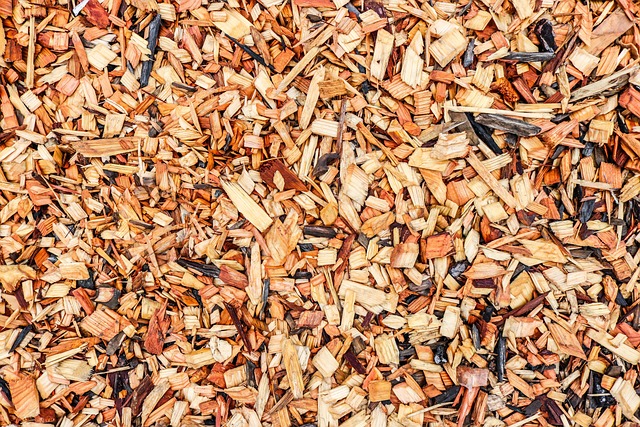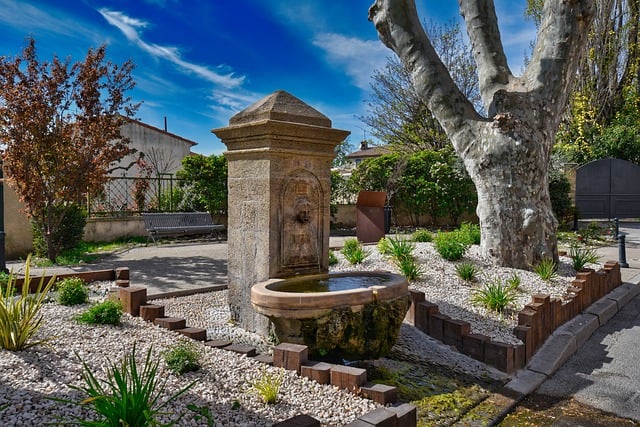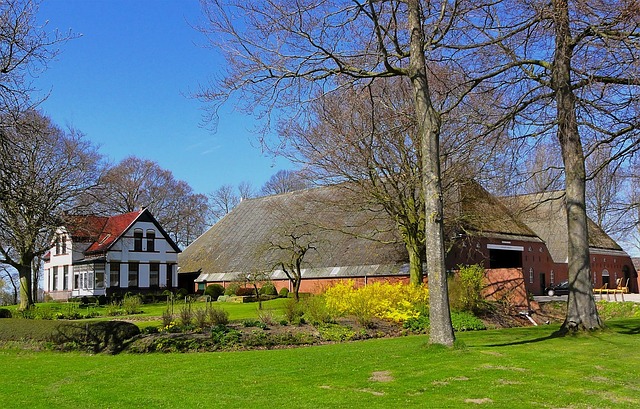In Portland, Oregon, where water conservation is paramount due to recurring droughts, xeriscaping has emerged as a popular and sustainable landscaping practice. Local Portland OR landscapers are at the forefront of this movement, promoting water-wise strategies that include native drought-tolerant plants, soil amendments for better water retention, efficient drainage systems, and organic mulches. By mimicking natural ecosystems, these practices not only transform outdoor spaces but also preserve local resources and support wildlife. Portland OR landscapers utilize techniques like drip irrigation, greywater recycling, and tailored plant choices to create low-maintenance, beautiful, and sustainable landscapes that thrive during dry periods.
“In the face of Portland, OR’s varying climate, including prolonged dry spells, eco-conscious xeriscaping offers a sustainable solution for landscapes. This approach prioritizes drought-tolerant plants and water conservation, addressing environmental challenges while enhancing outdoor spaces.
This article guides Portland OR landscapers through understanding xeriscaping, selecting suitable plants, implementing efficient water strategies, and creating low-maintenance, aesthetically pleasing landscapes that thrive in Oregon’s unique climate.”
- Understanding Xeriscaping: A Sustainable Approach to Landscaping
- Drought-Tolerant Plants: The Foundation of Eco-Conscious Portland Landscapes
- Water Conservation Strategies for Portland Landscapers
- Creative Solutions for Dry Spells: Overcoming Challenges in Oregon's Climate
- Benefits and Aesthetics of Low-Maintenance Landscaping
- Implementing Xeriscaping Practices: A Step-by-Step Guide for Portland OR Landscapers
Understanding Xeriscaping: A Sustainable Approach to Landscaping

Xeriscaping, a sustainable landscaping practice designed to conserve water and reduce environmental impact, is gaining popularity among Portland, OR landscapers and homeowners alike. By mimicking natural ecosystems, this approach emphasizes plant choices that require minimal irrigation, soil amendments for better water retention, and efficient drainage systems. It’s not just about drought tolerance; it’s about creating beautiful, low-maintenance outdoor spaces that thrive in Oregon’s unique climate.
In Portland, where water conservation is a priority, adopting xeriscaping principles can help landscapes flourish while preserving precious resources. Landscapers in this area are increasingly incorporating native plants, rock features, and organic mulches to create visually appealing and eco-friendly outdoor environments. By understanding and implementing these strategies, both residents and professional landscapers in Portland OR can contribute to a more sustainable future for their communities and the environment.
Drought-Tolerant Plants: The Foundation of Eco-Conscious Portland Landscapes

In Portland, OR, where water conservation is a priority, drought-tolerant plants are the cornerstone of eco-conscious xeriscaping. These plants, carefully selected for their ability to thrive with minimal water, not only help residents meet city watering restrictions but also contribute to a more sustainable landscape. Native species like Oregon grape and salal are popular choices due to their deep roots that tap into groundwater, reducing reliance on surface water.
Portland OR landscapers emphasize the importance of diverse plant life to create resilient gardens. Mixes of perennials, shrubs, and groundcovers not only conserve water but also provide food and habitat for local wildlife. By embracing these drought-tolerant strategies, Portland residents can enjoy beautiful, low-maintenance yards while preserving the region’s precious water resources.
Water Conservation Strategies for Portland Landscapers
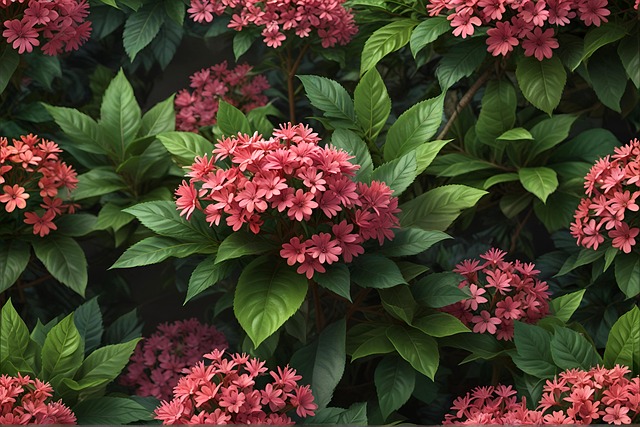
Portland, OR landscapers play a vital role in fostering a more sustainable and eco-friendly urban environment. Implementing water conservation strategies is crucial, especially with the region’s recurring droughts. One effective approach for Portland landscapers is xeriscaping, which involves designing landscapes that minimize water usage while maximizing aesthetics and functionality.
By adopting drought-tolerant plants native to Oregon, landscapers can reduce the frequency of irrigation. These plants are adapted to local conditions, requiring less water and maintenance. Additionally, using efficient watering equipment, such as drip irrigation or micro-sprinklers, allows for targeted water delivery, minimizing waste. Portland landscapers can also incorporate greywater recycling systems to reuse water from sinks and showers for landscape irrigation, further enhancing water conservation efforts.
Creative Solutions for Dry Spells: Overcoming Challenges in Oregon's Climate

In Portland, OR, where dry spells can be frequent and severe, xeriscaping offers a creative solution for landscaping that both conserves water and enhances drought tolerance. This approach prioritizes native plants adapted to low-water conditions, ensuring beautiful outdoor spaces that require less irrigation. Landscapers in Portland OR are increasingly adopting these practices, focusing on strategic placement of plants, efficient drainage systems, and the use of organic mulches to reduce evaporation and suppress weeds.
Overcoming challenges like limited sun exposure or varied soil types requires tailored strategies. For instance, selecting shade-loving drought-tolerant plants for shaded areas, installing drip irrigation systems for precise water delivery, and incorporating permeable materials in hardscape features are innovative ways to navigate Oregon’s climate. By embracing these creative solutions, Portland OR landscapers can create resilient, water-efficient outdoor oases that thrive during dry spells.
Benefits and Aesthetics of Low-Maintenance Landscaping

Low-maintenance landscaping, often featuring eco-conscious xeriscaping and drought-tolerant plants, offers a multitude of benefits for Portland OR residents and their properties. Beyond reducing water usage, which is crucial in our region’s drought-prone climate, these designs enhance overall landscape beauty while requiring less time and resources for upkeep. Drought-tolerant plants, carefully selected to thrive with minimal watering, transform outdoor spaces into vibrant displays that needn’t be constantly nurtured. This approach not only saves money on water bills but also fosters a more sustainable environment, making it an attractive option for Portland OR landscapers and homeowners alike.
Aesthetically, low-maintenance landscapes often showcase clean lines and thoughtful design elements, creating serene and inviting spaces. By incorporating native plants and drought-resistant shrubs and flowers, these landscapes offer year-round visual appeal without the need for excessive pruning or seasonal planting. This approach appeals to those seeking a beautiful, natural setting that requires minimal intervention, enhancing their Portland OR outdoor living areas while promoting ecological balance.
Implementing Xeriscaping Practices: A Step-by-Step Guide for Portland OR Landscapers
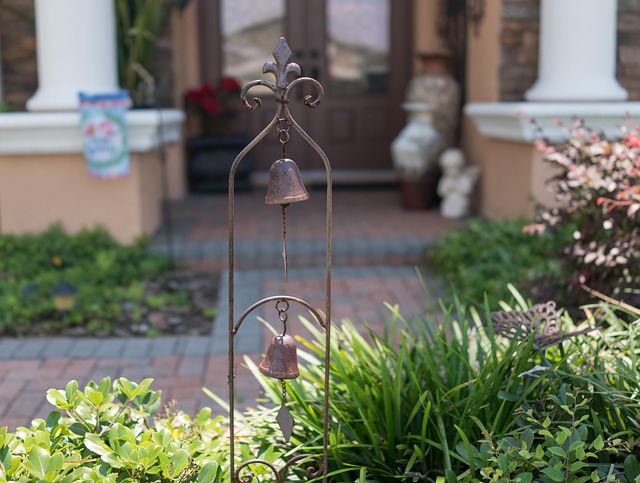
Implementing Xeriscaping Practices in Portland, OR is an eco-friendly approach that Portland OR Landscapers can adopt to promote water conservation and create beautiful, drought-tolerant outdoor spaces. Here’s a simple step-by-step guide for landscarpers looking to integrate these practices:
1. Assess Your Site: Begin by evaluating your property’s unique characteristics—sun exposure, soil types, and existing vegetation. These factors will guide your choices in selecting suitable plants and design elements. Portland OR Landscapers should note areas that receive full sun, partial shade, or deep shade, as well as any challenging soil conditions.
2. Choose Drought-Tolerant Plants: Opt for native and drought-resistant plant species adapted to Oregon’s climate. These plants require less water and provide habitat for local wildlife. Consider a mix of shrubs, perennials, and grasses that offer visual interest while minimizing irrigation needs. Portland OR Landscapers can consult with local nurseries specializing in native plants for expert recommendations.
3. Implement Efficient Irrigation: Instead of traditional sprinkler systems, install drip or micro-sprinkler systems designed to deliver water directly to plant roots. These systems are highly efficient, minimizing water waste by reducing evaporation and ensuring targeted watering. Schedule irrigation based on plant needs and weather conditions, utilizing smart controllers for optimal efficiency.
4. Create Mulch Layers: Apply organic mulch around plants to reduce weed growth, conserve soil moisture, and regulate soil temperature. A 2-3 inch layer of wood chips, straw, or compost not only protects delicate roots but also enhances the overall aesthetics of the landscape.
5. Design Water-Efficient Features: Incorporate hardscapes like permeable pavers, dry creek beds, and water-efficient fountains or birdbaths. These elements add structural interest while allowing water to soak into the ground, recharge local aquifers, and minimize surface runoff.
Portland OR landscapers now have a powerful tool at their disposal: eco-conscious xeriscaping and drought-tolerant landscaping. By adopting these sustainable practices, professionals can help residents reduce water usage, enhance local ecosystems, and create beautiful, low-maintenance gardens that thrive in Oregon’s unique climate. With the right plants, techniques, and creative solutions, Portland’s landscapes can become a testament to both environmental stewardship and aesthetic appeal.


